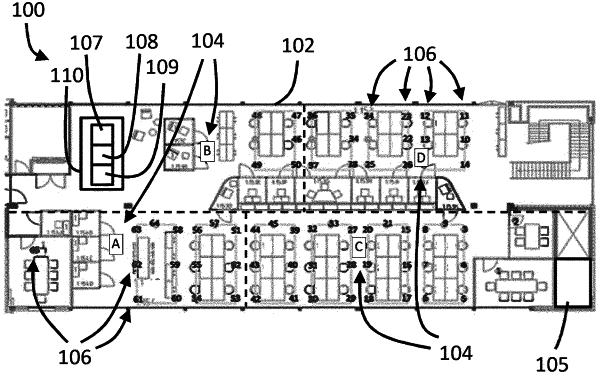| CPC G01S 13/86 (2013.01) [F24F 11/46 (2018.01); F24F 11/56 (2018.01); H05B 47/115 (2020.01); H05B 47/13 (2020.01)] | 15 Claims |

|
1. A method for determining a number of occupants at a location using multiple modalities, comprising:
gathering a first set of data from one or more motion sensors embedded in a lighting system in the location;
calculating a first occupant estimate from the first set of data using a first algorithm associated with the lighting system;
gathering a second set of data from one or more radiofrequency transceivers of an RF subsystem in the location;
calculating a second occupant estimate from the second set of data using a second algorithm associated with the RF subsystem;
fusing the first occupant estimate and the second occupant estimate to create a fused occupant estimate corresponding to the number of occupants at the location; and
training the first algorithm, the second algorithm, or both the first algorithm and the second algorithm by performing at least one of (i) inputting the second occupant estimate, the second set of data, or both, to recalibrate parameters of the first algorithm and (ii) inputting the first occupant estimate, the first set of data, or both, to recalibrate parameters of the second algorithm.
|